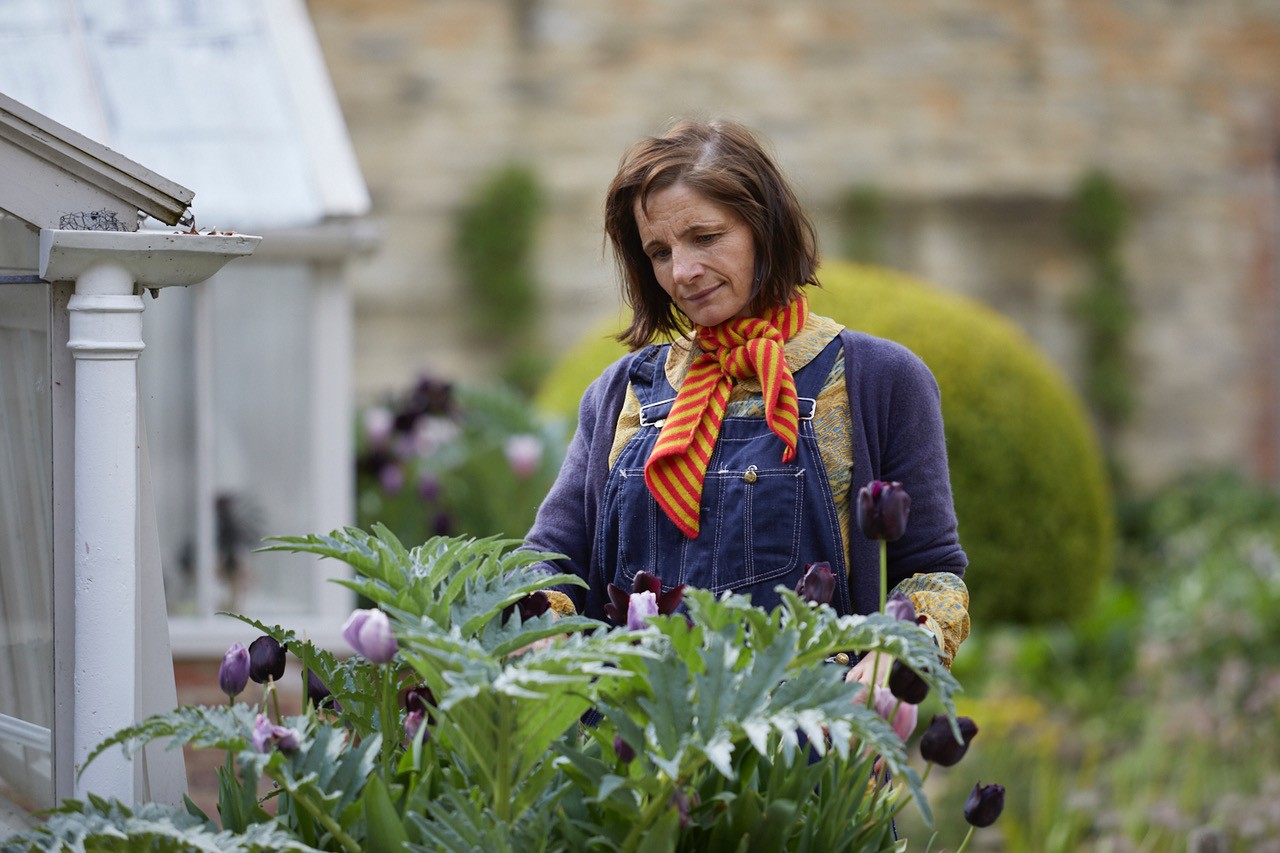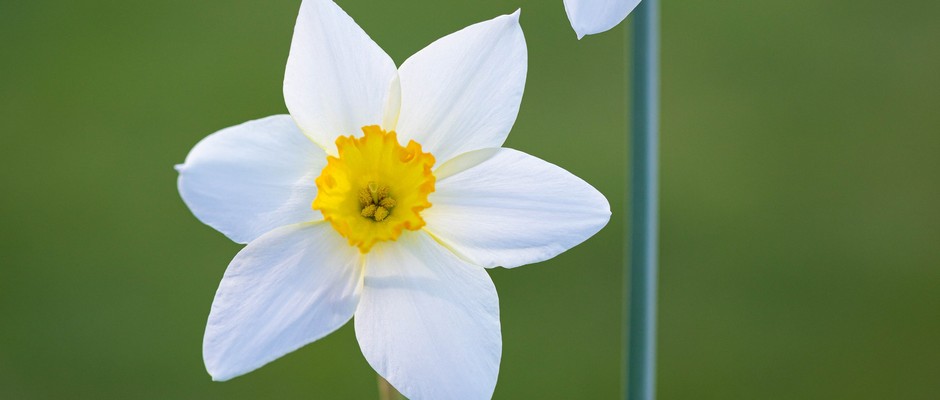
Narcissi: how to plant and care for narcissi
Expert grower Hannah Gardner gives advice on planting narcissi in borders, pots and lawns and recommends the 10 best narcissi to grow
Although Narcissi (commonly known as daffodils) are not truly native to the UK, they have been around for a very long time and provide the first significant colour-burst of spring, following on from snowdrops but flowering before many tulips and the wild bluebells. Immortalised by William Wordsworth and chosen as the national flower of Wales, daffodils come in a huge range of shapes, sizes and colour combinations. Many have a heady but fresh perfume and make wonderful cut flowers. Narcissi come back year after year, and are longlived and hassle-free bulbs.
How to grow Narcissi
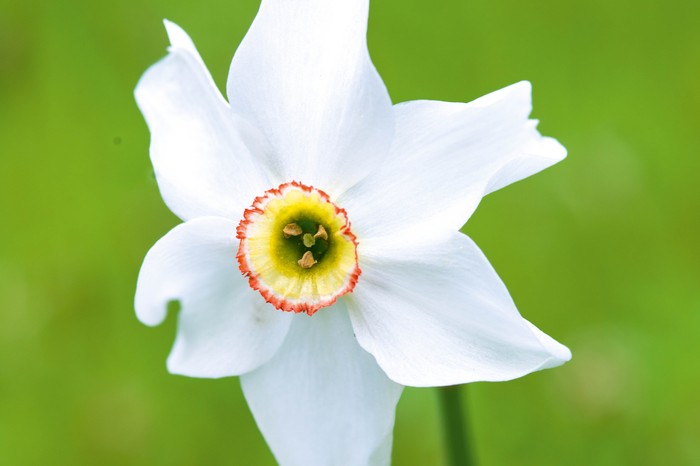
Where to plant daffodil bulbs
Narcissi are easy to accommodate in the garden. Plant them among other existing plants in borders, or in containers. Narcissi also do well in fine grass – try making a bulb meadow. Narcissi require plentiful sun to thrive.
When to plant daffodil bulbs
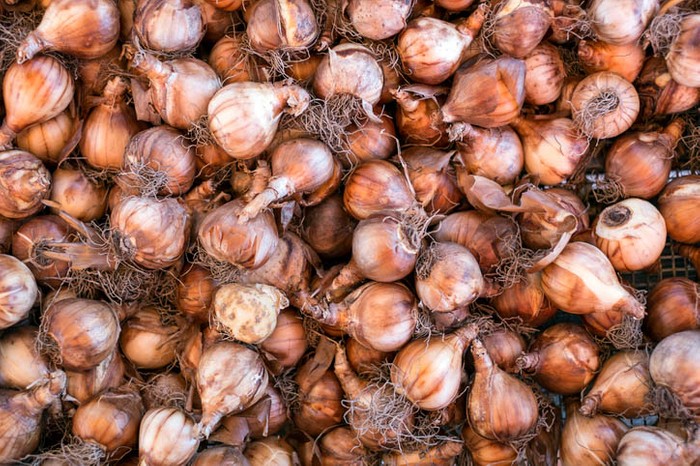
Plant your narcissi bulbs in late autumn. If planting into grass it is much easier to plant after the last mow of the year, so wait until mid-late October or early November. Avoid soaking wet or frosty days when soil is easily damaged.
How to plant daffodil bulbs
- If you aren’t able to plant bulbs straight away store them in a cool dry place.
- Select a spot that has sun for at least part of the day – the sunnier the better.
- Avoid planting in ground that is waterlogged or very heavy clay .You are looking for fairly nutrient rich, moist but free-draining soil. However given drainage, many narcissi really aren’t that fussy.
- Think what other plants are around, what will they look like in early spring (this may influence your colour choice). Blues, fresh whites and green look wonderful with most hues of yellow. Remember many narcissi are actually white, not bright yellow.
- If you are planting in between existing plants also think about how much space they will be taking up in spring. This may be quite different to autumn when you are planting.
- Place the narcissi bulbs on top of the ground where you are going to plant them then dig each one a hole at least twice the length of the bulb deep. This is usually 10-15cm deep. Plant at least 10 cm apart as they will clump up and increase over time. Place the smaller bulbs of shorter varieties closer together.
- Check bulbs are firm to the touch and undamaged then plant them pointy end up.
- Cover them back up with soil. Water the area with a watering can and rose if you face a dry spell.
Read about our recommended long-handled bulb planters.
How long do Narcissi take to grow?
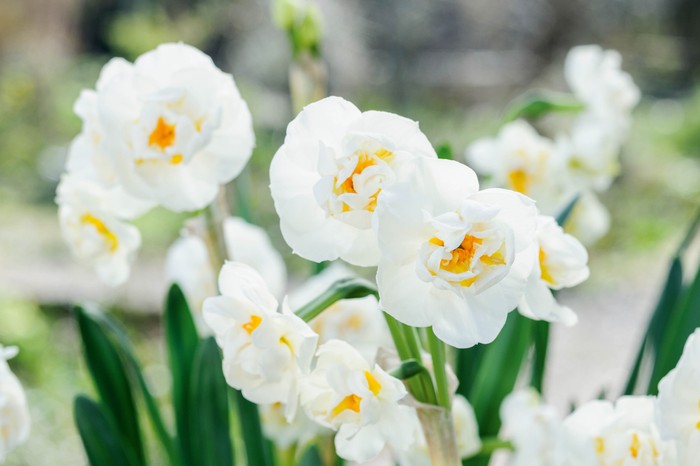
Narcissi are planted in the autumn and flower early the following spring between March and April/early May, depending on the variety.
Narcissi will re-flower year after year if they have been planted at the right depth and as long as their foliage is allowed to die back and go yellow once they have finished flowering. This allows nutrients from the leaves to re-enter the plant. The fresh green foliage emerges first, then the stem extends and finally a wonderfully cheerful and elegant flower is fully revealed as they open.
How to grow Narcissi in pots
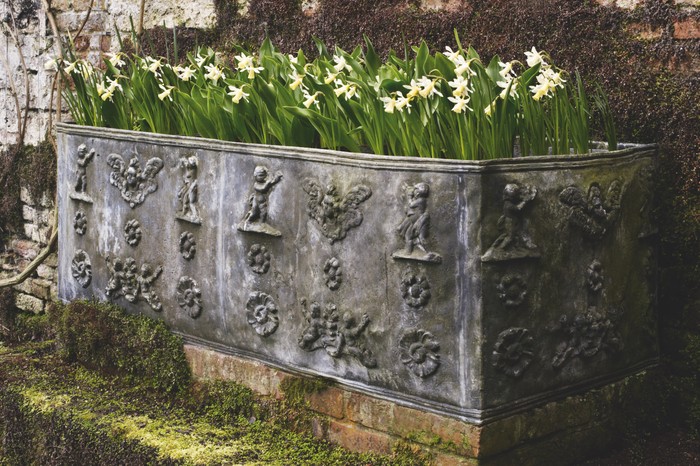
If you are planting two or three different varieties consider whether you want them to flower in sequence or all at the same time. Narcissi vary hugely in stature so check you are happy with the eventual height of the flowering stems, and that you have chosen a flattering combination. Ferns and hellebores add extra interest whilst you are waiting for the bulbs to appear.
- Look at the size of the bulbs and think about how many you can fit in your pot. Larger bulbs will need a deeper pot whilst small bulbs flourish in shallow containers.
- Ensure your container has drainage in the base. Then place some pieces of broken pottery or something similar that will partially cover the holes to create space for drainage.
- They will grow in any general purpose peat-free compost as long as there is good drainage. Narcissi do not need extra feeding as they grow.
- Fill the container with compost, to within 15cm of the top – and position the bulbs. They can be quite close if you want a full on flowery display but not touching. Next fill up to the top with compost, lightly pressing it down to avoid air gaps.
- Water once after planting to settle the bulbs in the compost and then the container can remain outside.
- Once the foliage starts to push through it is important that you water occasionally if there is a prolonged dry spell so they can continue to grow.
Read more advice on growing bulbs in pots.
Daffodil pests
Do squirrels eat daffodil bulbs?
Pests do not usually disturb daffodils as the bulbs are poisonous to many if eaten. Squirrels tend to leave daffodil bulbs alone.
Do badgers eat daffodil bulbs?
However badgers will dig up and eat daffodil bulbs. The best method to protect against them is to place some strong chicken wire or a wire grid just under the soil surface. The bulbs will grow through the grid, but the badgers cannot dig through it. Diluted male urine can also act as a deterrent.
How to grow Narcissi in grass
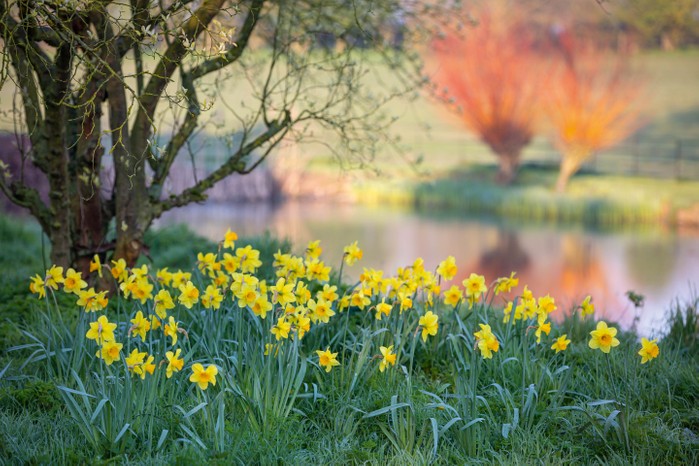
When planting in grass, remember to go for a very natural look. Plant in irregular loose groupings or ‘drifts’, avoiding straight lines and overly even ‘grid’ spacing.
Caring for Narcissi
It is worth deadheading daffodils after flowering so that energy isn’t wasted in producing seed. Let the foliage die back naturally before cutting it off - this will feed the bulb for next year.
Top 10 Narcissi to grow
Narcissus 'Seagull'
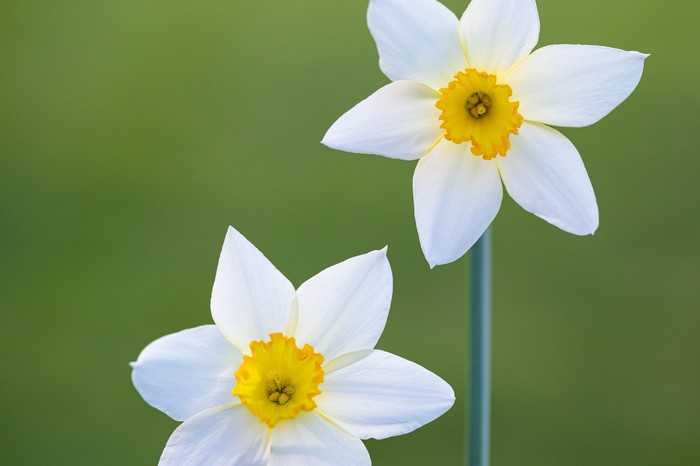
A historic variety with white petals and a very shallow yellow cup edged in apricot. Beguiling and elegant. Height: 35cm
Narcissus 'Spoirot'
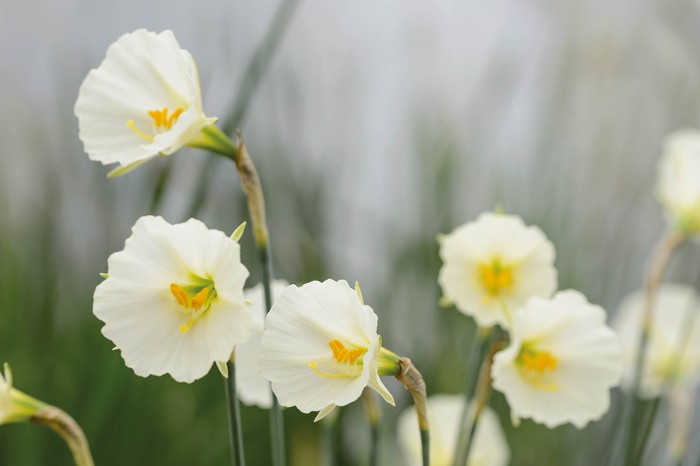
A pale cream hooped petticoat narcissi, the broad but delicate flowers are held above fine foliage. Good in short turf or grown in pots and brought into the house for close examination of the detail. AGM
Height: 25cm
Narcissus 'Cragford'
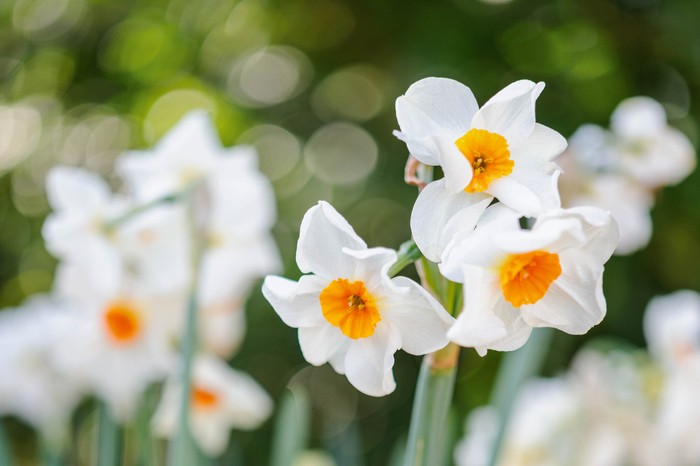
An heirloom variety from 1930 with white petals and a bright orange cup. Classy, fragrant and resilient to animal damage.
Height: 35cm
Narcissus 'Bridal Crown'

A fancy but tasteful double. The centres of the multi headed flowers are an exuberant ruff of light orange and soft yellow.
Height: 35cm
Narcissus 'Pipit'
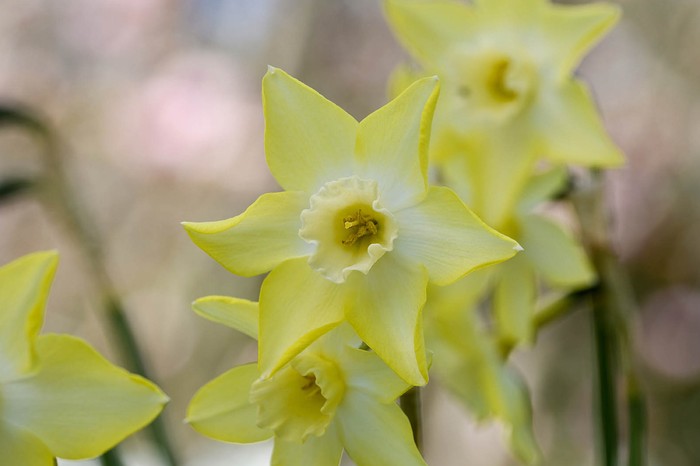
Fresh and pretty at the front of a border or in a container. The lemon yellow flowers fade to almost white. Good planted with muscari.
Height: 15-25cm
Narcissus 'Xit'
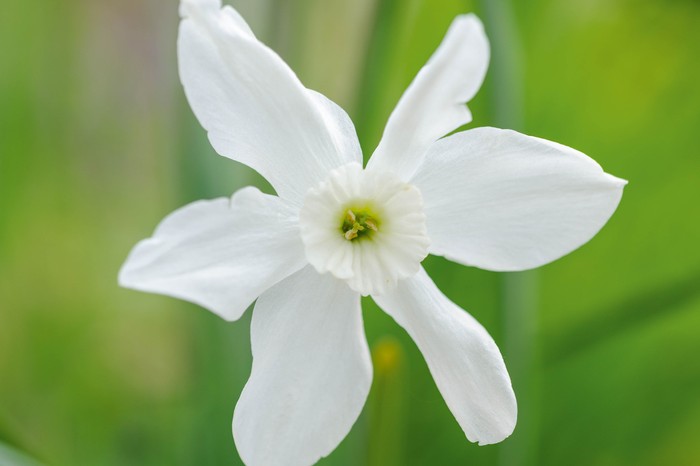
A demure miniature that mixes well with the jewel tones of low growing species tulips. The flowers are compact and pure white with an eye-catching pleated cup
Height: 15cm
Narcissus 'Thalia'
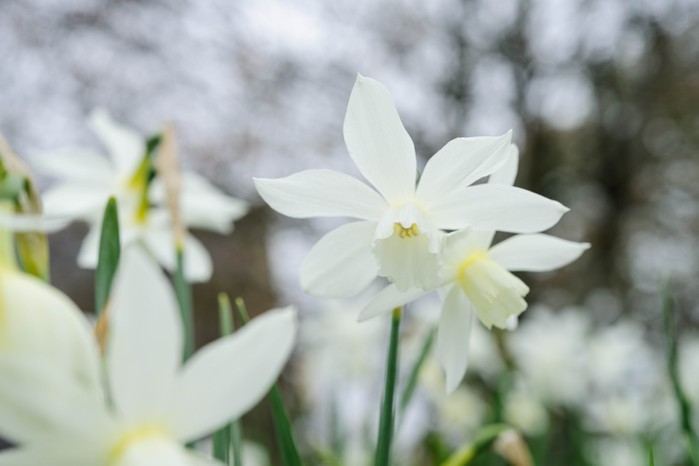
A versatile pale ivory narcissi that works well planted in borders amongst perennials. 3 or more flower-heads per stem
Height: 25cm
Narcissus 'Actaea'

Strong, tall stems, well scented and a crisp white flower that goes with everything. Good in containers or planted in grass near spring flowering blossom trees. AGM
Height: 40cm
Narcissus poeticus var. 'Recurvus'
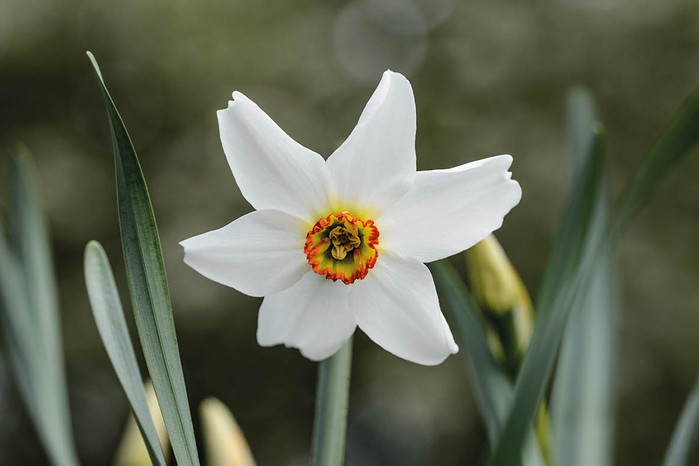
Poeticus is similar to Actaea but later flowering and much more delicate. Known as ‘Pheasant’s Eye’ they have a yellow cup with a deep red margin. Timeless when naturalised, either alone or alongside tulips (they flower in May so they often overlap with late tulips). AGM
Height: 40cm
Narcissus pseudonarcissus 'Lobularis'
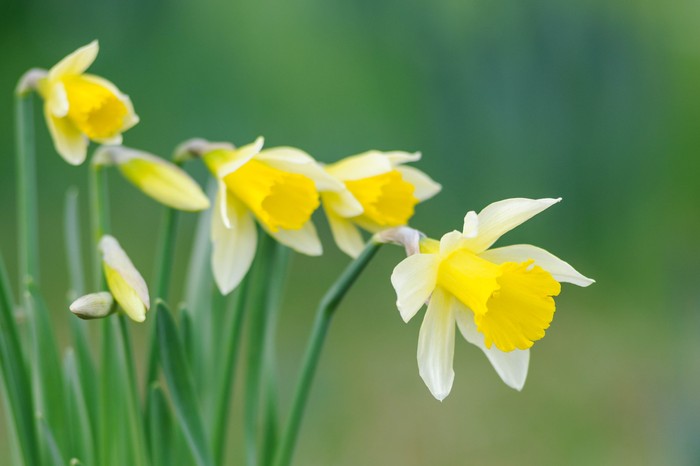
The ‘Lent Lily’ is wonderful for naturalising in grass or amongst woodland plants. Bold deep yellow trumpets are surrounded by tapered creamy petals
Height: 20-30cm
Narcissus 'Hawera'
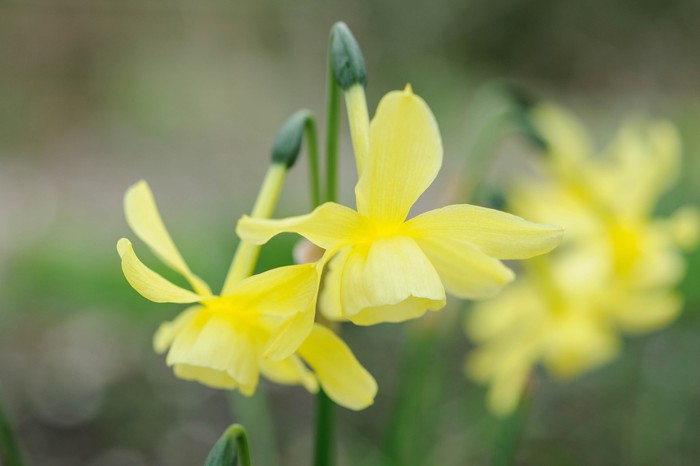
Beautifully proportioned, clear citrus yellow with a light scent. Top choice for pots or in a raised bed where it can be appreciated close up. 2-3 lemon yellow flower-heads per stem. AGM
Height: 20cm
Authors
Hannah Gardner is a Kew trained head gardener with twenty years experience based near Bath. Hannah founded her design studio New British Landscapes in 2010 and became a freelance consultant specialising in sustainable and organic horticulture in 2021. She pursues interests in travel, design, writing, consultancy, plantsmanship and practical horticulture.

Niwaki bundle worth £57 when you subscribe
Subscribe to Gardens Illustrated magazine and claim your Niwaki bundle worth £57
*UK only

Container Gardening Special Edition
The Gardens Illustrated Guide to Container Gardening.
In this special edition, discover colourful flower combinations and seasonal planting schemes for pots designed by leading plantspeople, and essential know-how for container gardening success. Just £9.99 inc UK p&pBy entering your details, you are agreeing to our terms and conditions and privacy policy. You can unsubscribe at any time.
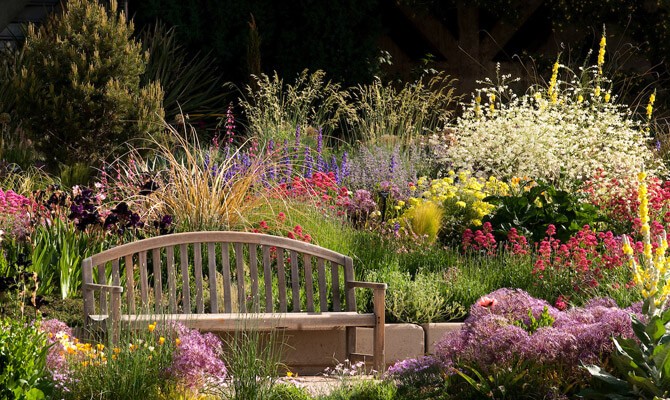
Gardens of the Globe
From botanical wonders in Australia to tranquil havens closer to home in Ireland, let this guide help you to discover some of the most glorious gardens around the world
By entering your details, you are agreeing to our terms and conditions and privacy policy. You can unsubscribe at any time.


